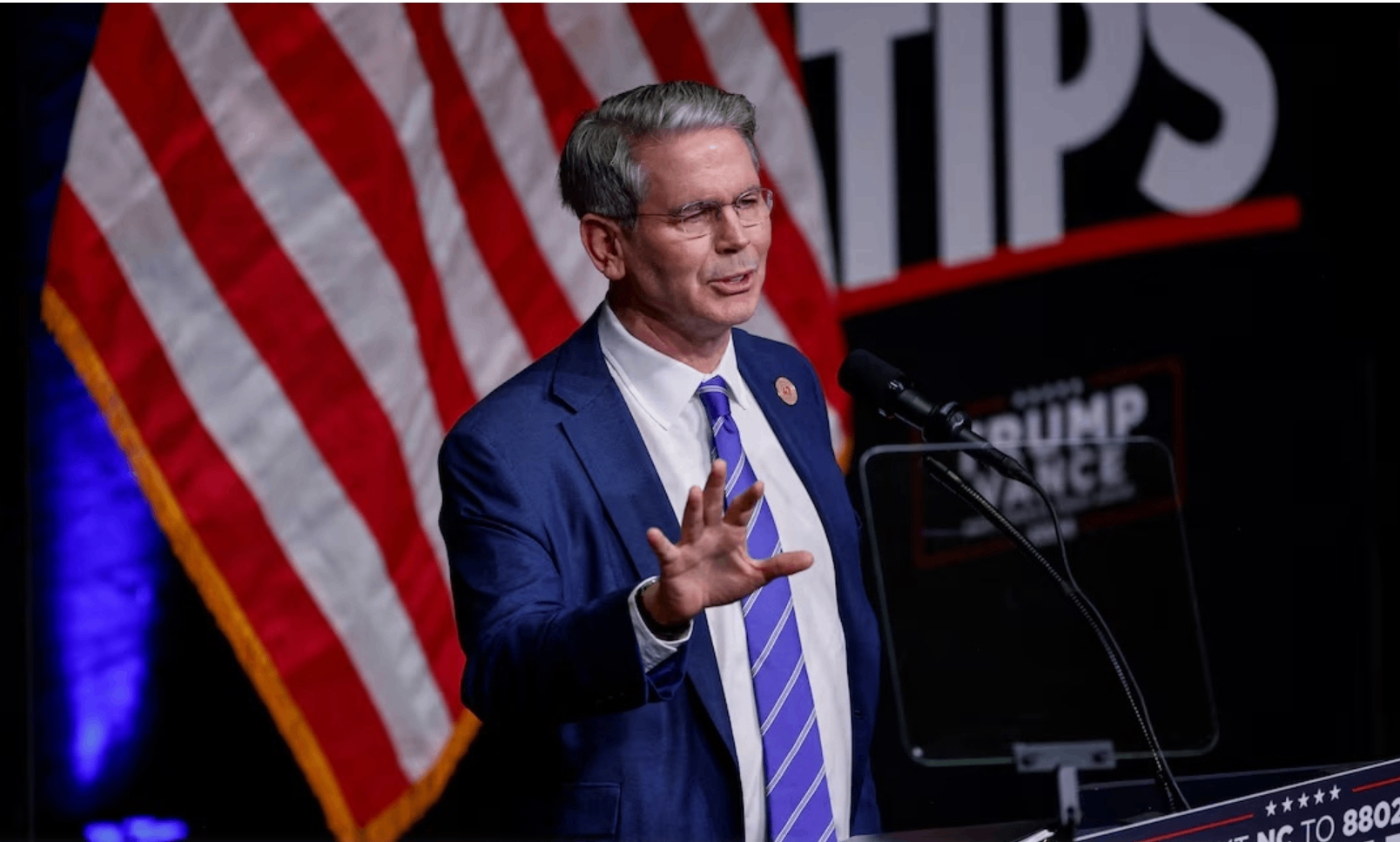The Trump administration's permanent tax cuts, deregulation, and trade negotiations will restore the golden age of "non-inflationary growth" during its first term.
On May 7, at the Milken Global Conference in 2025, US Treasury Secretary Besant once again declared that the United States remains the "preferred destination" for global capital and predicted that the Trump administration's economic policy portfolio-tax cuts, deregulation and trade agenda-will push US GDP back to 3% growth in 2026.
The "non-inflationary growth" narrative of policy mix
Besent's core argument is that the Trump administration's permanent tax cuts, deregulation and trade negotiations will repeat the golden age of "non-inflationary growth" during his first term.He proposed reducing the deficit by $300 billion per year (about 1% of GDP) and reducing the deficit ratio to 3% within four years, thereby eliminating the credit risk of U.S. debt, thereby lowering long-term interest rates and attracting global capital.The underlying logic of this strategy is: the "dual track parallel" of fiscal austerity and the release of private sector vitality-while the government cuts spending and jobs, it also stimulates companies to leverage and transfer resources to private investment by relaxing financial supervision.
In addition, Besent regards the yield on 10-year U.S. bonds as a key indicator of policy effectiveness and attempts to set an "invisible ceiling" for yields by limiting the scale of long-term bond issuance and adjusting bank capital rules.However, this design faces a realistic paradox: Trump's aggressive tariff policy has caused companies to delay investment and hoard cash. Citigroup CEO Jane Fraser pointed out that customers are "preparing for difficult situations," while IMF Managing Director Georgieva warned that U.S. tariffs are pushing the world into a cycle of "more volatility" and lowered its global growth forecast for 2025 to 2.8%.InvalidParameterValue
The signal of division in capital markets
Although Besent claimed that the U.S. market is "anti-fragile" and cited recovery after historical crises as an example, the current capital flow has become contradictory.In April 2025, after Trump announced the imposition of reciprocal tariffs on major trading partners, U.S. stocks, U.S. bonds and the U.S. dollar fell in a rare manner, breaking the traditional safe-haven asset logic and being interpreted by former Treasury Secretary Yellen as "a loss of confidence in U.S. policy."
Although Basent attributed market volatility to "transition pains" and hinted that some trade deals could be reached this week to ease tensions, feedback at the corporate level suggests that pressure from supply chain restructuring and rising costs is eroding profits.For example, although Honda's move to Indiana is regarded by Bessant as an example of industrial return, it cannot conceal the fact that most companies have frozen investment due to uncertainty.
At the same time, after the Federal Reserve cut interest rates by 50 basis points, the yield on 10-year U.S. bonds rose instead of falling, reflecting the market's doubts about policy synergism-the rise in term premiums and inflation expectations offset the impact of the downward trend in short-term interest rates, implying investors 'concerns about the sustainability of the "fiscal led" model.InvalidParameterValue
Realistic resistance to the 3% growth target
Besent anchors 3% growth as a "double acceleration" of labor productivity and labor expansion, but the deviation of this vision from historical data cannot be ignored.Former Federal Reserve Chairman Yellen once pointed out that to achieve a 3% growth rate, labor productivity needs to continue to exceed 2%, while the average over the past ten years was only 1.1%.Currently, Trump's policy portfolio lacks substantial investment in technological innovation, and instead relies on traditional means such as increasing energy production (such as 3 million barrels of crude oil per day) to curb inflation. The effect may be offset by the rising costs caused by the restructuring of the global supply chain.More importantly, the "boomerang effect" of tariff policy is emerging: the U.S. import price index rose by 4.2% year-on-year in the first quarter, and the core PCE still hovered at 3.1%, indicating that imported inflationary pressures have not disappeared, which contrasts with Besent's "natural lowering of interest rates".InvalidParameterValue
Wait-and-see and game of global capital
Although Besent emphasized that the United States has the "deepest liquidity" and property rights protection, global capital allocation is being adjusted due to policy uncertainty.Bank of Japan Governor Kazuo Ueda said frankly that Trump tariffs forced the central bank to include an "external impact assessment" in its decision to raise interest rates, while Australia's choice to return to fiscal deficits to alleviate pressure on people's livelihood highlights the "America First" policy level of various countries. Passive adaptation under the agenda.
For multinational investors, Bessant's "put options-style intervention"(such as suppressing long-term bond yields) can stabilize the bond market in the short term, but it may distort the risk pricing mechanism and aggravate long-term capital mismatch.Subadra Rajappa, head of interest rate strategy at Societe Generale, pointed out that if the yield exceeds 4.5%, the Ministry of Finance may be forced to further reduce long-term bond issuance. This "crisis-driven regulation" will be difficult to maintain market trust.InvalidParameterValue

